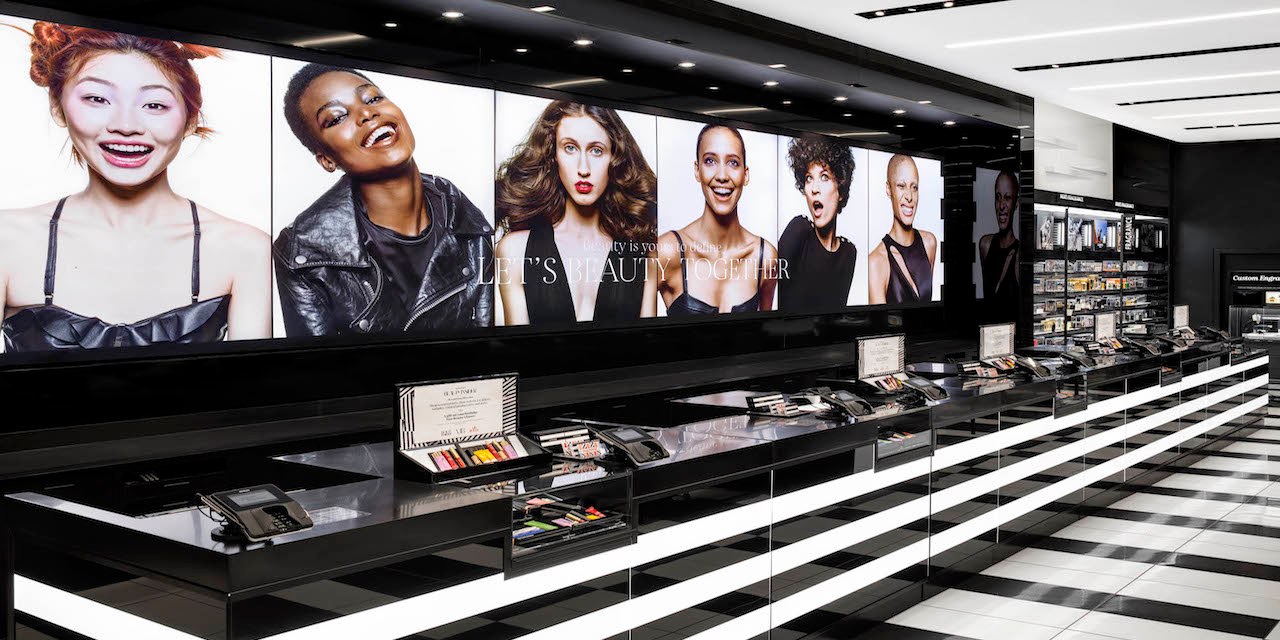What Kohl’s Sephora partnership means for the future of department stores

After a decade-long partnership with JCPenney, Sephora is now striking a deal with one of its rivals to reach new customers.
On Tuesday, Kohl’s announced that it had secured a partnership to open 850 Sephora shop-in-shops within its stores by 2023, the first of which will open next year. For the past 16 years, Sephora has operated shop-in-shops within JCPenney stores. That deal is set to expire by 2023. A JCPenney spokesperson told Modern Retail in an email that the company is focused on, “developing a new, inclusive beauty concept that offers our customers a wide array of product,” while the Sephora partnership winds down.
Sephora’s decision to ditch JCPenney for Kohl’s signals how drastically the fortunes of these two department stores have diverged. While Kohl’s has reported sales decreases during the coronavirus pandemic, it has been able to weather the pandemic better than other department stores because the majority of its stores are located outside of malls. Additionally, Kohl’s is making an effort to ramp up its assortment in both beauty and tangentially related areas, like health and wellness. Meanwhile, despite hiring a new CEO two years ago, JCPenney has failed to increase store traffic, and has struggled to shake off the connotation that its a destination for more formal women’s workwear. JCPenney filed for bankruptcy protection in May, and announced it has entered a purchase agreement with Simon and Brookfield property groups, but that deal has yet to close.
“I think this partnership really shows that [Kohl’s] is making strides on bettering their assortment,” said Jessica Ramirez, retail research analyst at Jane Hali & associates. They announced previously that they wanted to get into beauty this year….and this is a faster way to get to that ambition.”
Relying on partnerships to draw new customers has been critical to Kohl’s strategy over the past few years, most recently by partnering with Amazon to allow its customers to make returns at all Kohl’s stores. It hasn’t always been a smashing success — Kohl’s sales growth before the pandemic was spotty, reporting just one quarter of same-store sales increases in 2019. But, it was better growth than other department stores were reporting, with JCPenney reporting a sales decrease of 8.1% in 2019.
And during the coronavirus pandemic, Kohl’s has struggled to return to sales growth, reporting a comparable sales decrease of 13.3%. But despite the struggle that apparel-dependent stores like Kohl’s face, Ramirez said that Kohl’s offers Sephora a key advantage that JCPenney did not: the fact that most of its stores are located outside of malls. That makes it easier for Sephora to facilitate services like curbside pickup, which has become more popular during the coronavirus pandemic. Before pandemic, off-mall was already a focus for the cosmetics chain, as Sephora had announced plans to open 100 new stores in 2020, with the majority of them being located in strip malls. One of its biggest competitors, Ulta, also has a similar vision; it recently announced plans to open shop-in-shops in Target, another staple of off-mall retail.
Kohl’s new direction
The coronavirus pandemic has also accelerated Kohl’s plans to shift its merchandise assortment away from women’s formal and workwear. At an investor day in October, Kohl’s unveiled plans to “be the most trusted retailer of choice for the active and casual lifestyle.” In order to achieve that vision, Kohl’s plans to increase its activewear assortment — with the hopes of one day deriving 30% of its revenue from activewear, up from 20%. Additionally, Kohl’s announced plans to test out a “wellness market” concept in 50 stores, which will carry eco-friendly cleaning and health products.
At first blush, yoga pants and laundry detergent might seem like an odd fit to carry alongside lipstick. But retail analysts say that they think both Kohl’s and Sephora are trying to tap into the growing wellness movement with these moves.
“I think [Kohl’s] is definitely honing on that younger consumer the millennial parent — a customer that is very focused on health, wellness, fitness and sees beauty as an important part of self-care,” said Tiffany Hogan, senior apparel analyst at Kantar Consulting.
Ramirez added that in particular, she thinks the clean beauty movement — which is about using products that purportedly contain healthier and more natural ingredients — goes “hand-in-hand” with the active consumer that Kohl’s is targeting.
JCPenney’s inconsistencies
Meanwhile, under the leadership of CEO Jill Soltau, JCPenney has experimented with a variety of ways to revamp its stores — namely, by trying to trim down the amount of merchandise in stores, as well as testing out a variety of new in-store concepts at a remodeled store in Dallas, which included a fitness studio, a clubhouse with kids activities and an area to meet with stylists. But unlike Kohl’s, JCPenney hasn’t settled on one concept or one particular lifestyle to focus on in stores.
Additionally, JCPenney continues to be thought of as a destination for workwear — a connotation that especially makes its stores less appealing during the coronavirus pandemic, when fewer people are going into the office. “During our research, it became clear that many of our customers don’t think of JCPenney as a place for casual or denim apparel,” Michelle Wlazlo, executive vice president and chief merchandising officer at JCPenney said in February, when it released a new private label denim line.
“JCPenney just really went down the wayside a long time ago, and I think Kohl’s — it hasn’t fully been successful, but it has done some positive things, and has listened a little bit more to the customer,” said Ramirez. “When we look at department stores….we’ve continued to have trouble understanding what the strategy is.”

